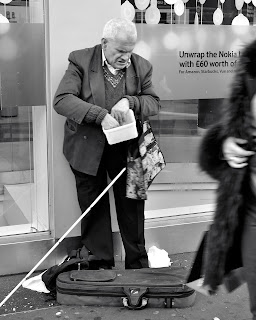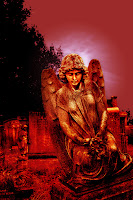Oxford Street
A busy shopping street and some photograph's
of the people who shop there
At that time in history this part of Oxford street was not very fashionable. The store opened on the 15th March 1909 and became an immediate over night success. This was achieved by offering the consumer a pleasurable and fun shop rather than shopping because you have to. Selfridge's put the merchandise on display so customers could examine the products before there decided to purchased them. This was unheard of, if you went into a store, shop at the turn of the century you was expected to buy something. Selfridge's became the market leader in the way it treated its costumer and coining the phrase “the customer is always right” and other well known phrases. There were over five floors packet with merchandise all being easily accessible by the customers. The staff were taught to be very helpful and to sell product none aggressively. Selfridge's had elegant restaurants, a reading room, a library, a first aid room and a silence room these were all designed to keep the customer in the store as long as possible. This was the foundation of the way we shop today.
 Some of the buildings and shops on Oxford Street date back to the 18th century like John Lewis opening its doors to the public in 1864. John Lewis started out as a small drapery shop and by early 1880's the successful shop had to expanded. They decided rebuilt the store and make it into a modern day department store of its time. When his son John Spedan Lewis took over in the early part of the 19th century he founded the John Lewis Partnership in 1921. The Oxford Street store is still the flagship of John Lewis and it is the third largest Department store in the UK. There are a number of flagship stores on Oxford Street like Marks & Spencer which is the companies largest store in the UK being 16,000m2 in size. Debenham's also as its flagship store there too. Debenham's was originally called Marshall & Snelgrove. Marshall & Snelgrove started doing business with Debenham's after the WW1 ended in 1916 and in 1919 Debenham's fully merged with Marshall & Snelgrove but it only changed its name of its Oxford Street store in 1973 after the store was completely rebuilt. The House of Fraser decided to make the Oxford Street store its flagship in 2001 after the group took over D H Evans. The D H Evans store had been on the Oxford Street site since 1879. It was one of the first shops to have escalators serving each floor. These are just some of the hundreds of stores on Oxford Street.
Some of the buildings and shops on Oxford Street date back to the 18th century like John Lewis opening its doors to the public in 1864. John Lewis started out as a small drapery shop and by early 1880's the successful shop had to expanded. They decided rebuilt the store and make it into a modern day department store of its time. When his son John Spedan Lewis took over in the early part of the 19th century he founded the John Lewis Partnership in 1921. The Oxford Street store is still the flagship of John Lewis and it is the third largest Department store in the UK. There are a number of flagship stores on Oxford Street like Marks & Spencer which is the companies largest store in the UK being 16,000m2 in size. Debenham's also as its flagship store there too. Debenham's was originally called Marshall & Snelgrove. Marshall & Snelgrove started doing business with Debenham's after the WW1 ended in 1916 and in 1919 Debenham's fully merged with Marshall & Snelgrove but it only changed its name of its Oxford Street store in 1973 after the store was completely rebuilt. The House of Fraser decided to make the Oxford Street store its flagship in 2001 after the group took over D H Evans. The D H Evans store had been on the Oxford Street site since 1879. It was one of the first shops to have escalators serving each floor. These are just some of the hundreds of stores on Oxford Street. 
 Oxford Street is still one of the busiest streets in the world and as repetition for having fine department stores. About a month ago I went there to capture the hassle and bustle of the street with my camera. Also I wanted to see if it still have the charm that I remembered from my childhood. I was not disappointed, it still had the charm being one of the grandest streets in England with its beautiful and elegant buildings and lovely architecture built many years ago. As I walked up and down the street I came to the conclusion that its still got it's charm and magic that I remember from my childhood. It's not like the shopping center's that you visited these days. Oxford Street is the original shopping center's that happens to be a street not a block purposely built for shopping. Oxford Street as a lot of history and we should be proud of the street.
Oxford Street is still one of the busiest streets in the world and as repetition for having fine department stores. About a month ago I went there to capture the hassle and bustle of the street with my camera. Also I wanted to see if it still have the charm that I remembered from my childhood. I was not disappointed, it still had the charm being one of the grandest streets in England with its beautiful and elegant buildings and lovely architecture built many years ago. As I walked up and down the street I came to the conclusion that its still got it's charm and magic that I remember from my childhood. It's not like the shopping center's that you visited these days. Oxford Street is the original shopping center's that happens to be a street not a block purposely built for shopping. Oxford Street as a lot of history and we should be proud of the street.









